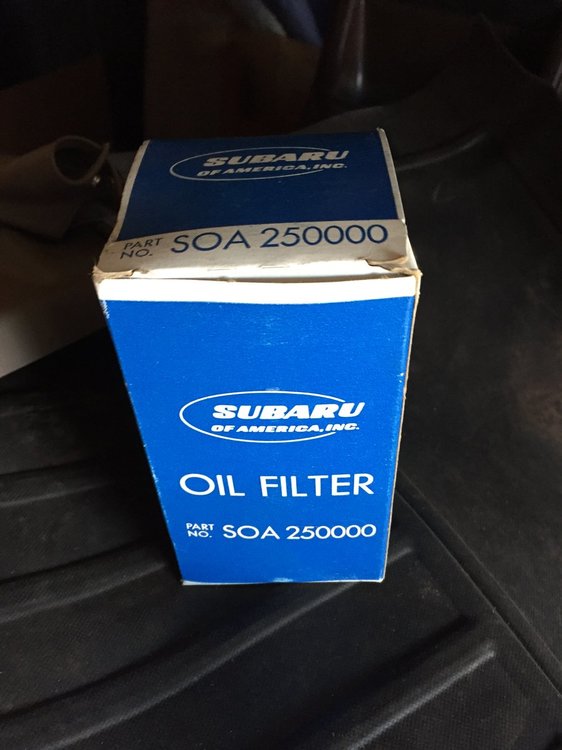-
Posts
610 -
Joined
-
Last visited
-
Days Won
9
Content Type
Profiles
Forums
Gallery
Store
Posts posted by Subaru Scott
-
-
Paul, that's a major short there. Don't bother pulling the smaller fuses, they would have blown already.
Not remembering how the circuit path is on those, I'm gonna say the alternator is the most likely first place to check.
Unhook the big wire from the alternator and test with a jumper like montana tom said.
Don't try to run the engine unless you pull the small wire plug from the alternator as well.
If that's not it, start looking for a damaged area in the harness after the underhood fuse box.
Check in the drivers fenderwell. Could have had a tire come apart or road debris tear into it there.
-
I think I would start with a new coolant temp sensor.
-
 1
1
-
-
-
Hey, Subasaurus, great idea using the copper tube for terminals!!
That's probably the base for commercially made terminals anyway, they just "tin" it to keep it from turning green.
I too love the butane soldering irons. They work great and are completely portable.
I do love soldered connections, but you have to keep a couple of things in mind:
Connections subjected to high vibration, could potentially fracture because all the "give" in the wire was taken away with soldering. I personally have never seen an example of this, and don't believe it is as critical as some claim. Especially if the wire is supported with the vibrating component, well past the wicking point.
An additional mechanical connection is preferred, (and required by the NEC in most cases, even though not relevant to automotive systems) because given enough current and resistance, solder will melt.
Those ratchet crimpers do a great job up to a #8 wire. Especially the ones with the dies that actually stuff the open ends of the terminals down into the center of the wire like OEM.
-
 1
1
-
-
10 hours ago, idosubaru said:
Great, thanks. By “#2 on a #4” do you mean using a larger end on a smaller wire?
I have crimping pliers, I’ll keep those hammer jobs in mind.
#2 and #4 is a standard measurement ? Why have I seen confusion between AWG and nonAWG gauges before?
Yes, so if you only had the larger #2 terminal on hand, for example, using the hammer crimper.
Crimping pliers are not big enough for any cable this size.
AWG = American wire gauge. There are also British and European metric sizes. Subarus are technically a metric size, but you really can't find metric terminals here.
-
Between #2 and #4, depending on year and model.
I use the hammer-type crimp tool, which will do a great job on most any size battery cables and ends.
They are also very compact to carry with you since the other half of the tool, a BFH, is usually in your tool kit already.
Will crimp a #2 end on #4 wire quite nicely as well.
-
Did you hook up the check engine light?

-
I'd say your chances are pretty good. The coolant dousing your spark would have happened pretty soon after the hose came off.
Even though, once all the coolant is gone, the temp sender won't show how hot the engine really is because it will only be sensing the air in the empty coolant passage.
-
 1
1
-
-
I don't think the words SVX and winter beater belong in the same sentence

I would say the trans in the 97 HAS to have been rebuilt or swapped with that kind on mileage.
If it shifts good and solid, putting that in the 96 seems like the easiest plan. But I would definitely confirm the final drive ratio.
The 4.44s seem to work very well in the SVX.
A manual swap would be cool, but more work. Maybe not as much as you think. I understand certain pedal clusters will bolt-in.
Manual swap cars do go for a little more, but not really proportional to the time and money required.
Too bad you don't have a manual trans parts car too...
-
The coolant drowned your coil pack and shorted the spark to ground.
Spray it down with some WD-40 and then wipe off the excess. Pull the plug wires out and get inside too.
-
 1
1
-
-
Sounds like you have another issue. EA71s have more than enough radiator capacity and normally never have overheating problems.
If your timing is too retarded it will cause overheating. Too much advance only makes problems when it starts detonating.
The fans only come in to play when you are stopped or moving very slowly.
Try gunning it with the radiator cap off and see what happens

-
 1
1
-
-
That's gorgeous. Wonder how many got sucked through the main jet?
Was that one made in Italy, or, elsewhere...?
-
You probably already know this, but just in case you weren't aware of all the details:
The EA82Ts are head snappers. They crack between the valves and in the exhaust ports.
I worked in the dealers when these cars were new, and we would fill pickup trucks up with cracked heads, and use the scrap money for "Chili Fridays."
Subaru went through two revisions of the castings till they finally got it "fixed" in 89, but I heard even some of the latest ones cracked.
They are identified by the "EA82" cast in the bottom of the head. The first revision had a line cast under the EA82, and the second revision had a box cast around it.
I wouldn't keep of try to use anything but the box heads. Not a question of if, but WHEN they WILL crack.
-
Is that the one off eBay?
-
5 hours ago, jono said:
Seen the Clover brand but think its only in 500gram (testicle ball park pricing) on order.
I had time to test results, found results improved when I used springs to pull valve shut
The inlets are bubble free, the exhausts, well, aren't. Going for the dried out two in one fine section next try
It is just fine. Grit size would be TMI for the average consumer
I usually cheat and chuck a variable speed drill on the stem

-
Looks like Rallyru is about to ditch his EA81. He lives close enough to you.
-
Nippondenso disributor? Reddish cap?
-
Weld something to it to get it out.
-
 1
1
-
-
No, just remove all the unnecessary wires from the engine donor harness and add it in the vehicle to run the engine systems.
The rest of the wiring can remain unchanged. Just have to parallel connections at the ignition switch and instrumentation, and run wiring to the new fuel pump.
Easy peasy.

-
I daily my 83. Sure, it needs attention from time to time, but certainly not any more than other older cars.
Parts are sometimes hard to come by, but not impossible. Just depends on how hard you're willing to try.
I'm positive, if you look long enough, you could find a good used engine to drop in and be on your merry way.
There have been a few offered here on this forum, sometimes for free!
Going EJ22 is also an excellent alternative, and really not that difficult.
If the body is in good shape, then it's worth, in my opinion, putting a little time and money in to have yourself a cool, retro ride that will be a fun, dependable car with the right care.
I love the 2nd generation styling more and more as they, or I, or both, get older.
-
 1
1
-
-
There is just a jumper that switches it for one or the other.
What are you trying to do? Keep the ECS light alive?!?
-
-
2 hours ago, VWguy said:
I’m in need of replacing the boots on the rear axle of my ‘86 Brat and was wandering how the boots from eBay held up?
Following as well.
Recommendations boys?
-
Well man, it's pretty hard to get an idea from your descriptions, but I think first you need to check if you have power at the fuel pump.
You will have to do this with a test light or voltmeter across the two fuel pump wires where they connect to the pump.
You will have to crank the engine over while looking at the light or meter for voltage.
If you DO have power, then something is wrong with your pump, or the lines/tank is clogged.
If you don't have power, then you need to look to the voltage regulator and alternator. If either of them are not functioning properly, you will not get power to the pump.
You can also provide temporary jumper wires to the pump to see if it will run. You should be able to hear it clicking, and it will pump gas into your bucket if the fuel lines and tank are clear.




Trans ATF
in 1990 to Present Legacy, Impreza, Outback, Forester, Baja, WRX&WrxSTI, SVX
Posted
I just went through this with my Tribeca.
Read specs until my eyes were crossed.
In the past, I always went with Castrol, but after comparing specs with Subaru HP...
Mobil1 was the only off-the-shelf I could find that had a comparable viscosity@100 degrees Celsius.
Most all other brands thinned out at that temp.